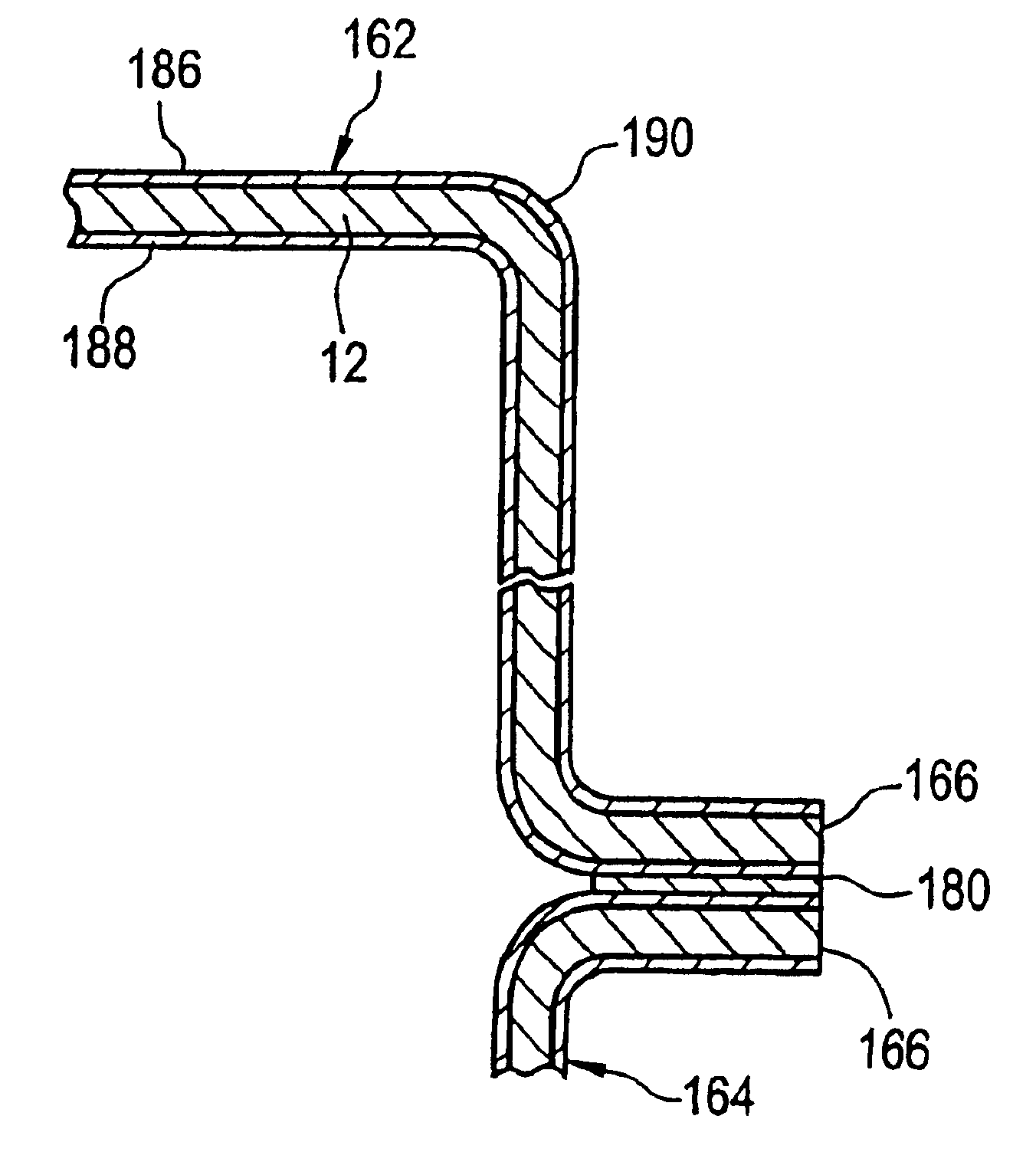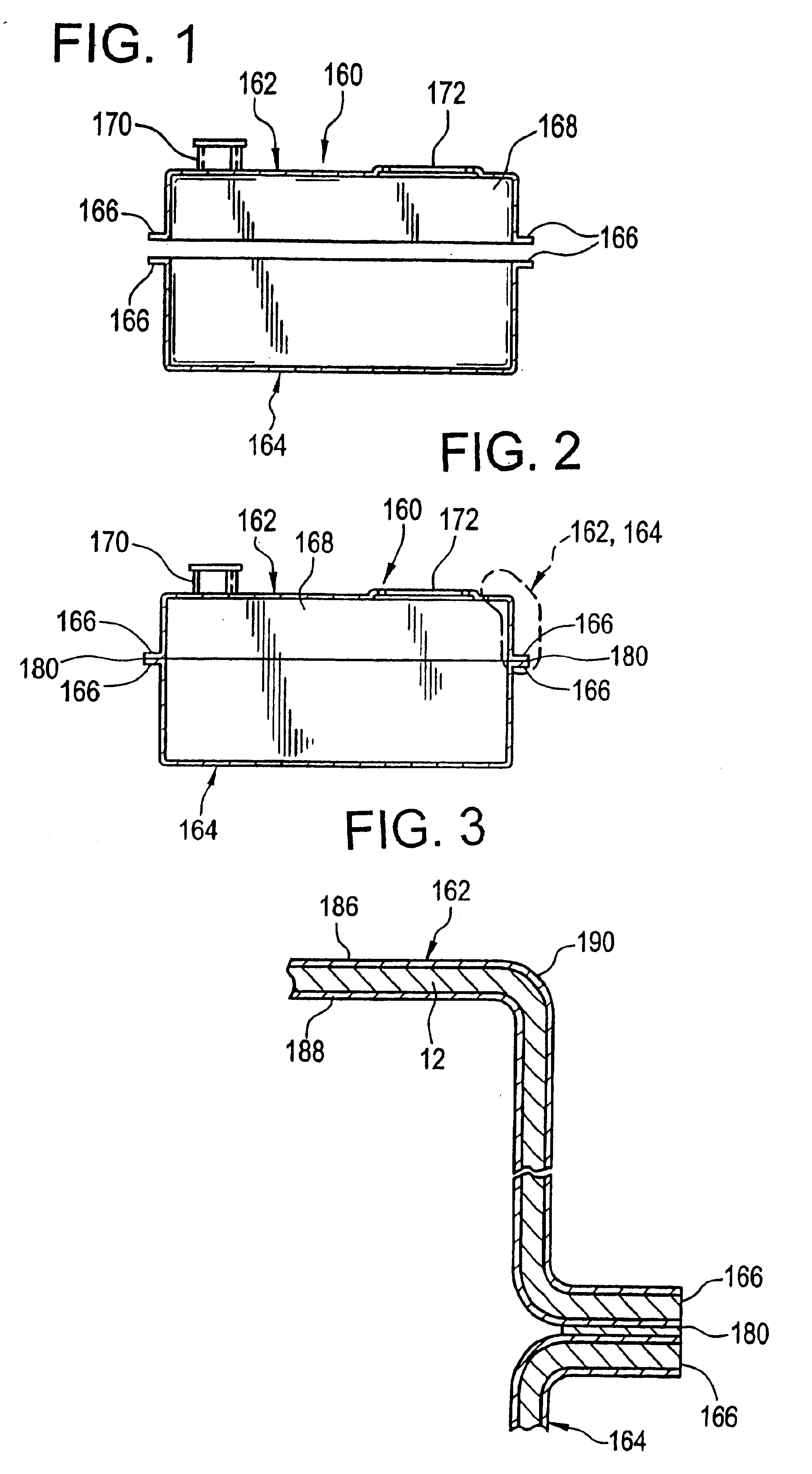Corrosion-resistant fuel tank
a fuel tank and corrosion-resistant technology, applied in the direction of transportation items, packaging, items transportation vehicles, etc., can solve the problems of self-healing and other problems, and achieve the effects of strong bonding, easy cleaning or pickling, and easy removal
- Summary
- Abstract
- Description
- Claims
- Application Information
AI Technical Summary
Benefits of technology
Problems solved by technology
Method used
Image
Examples
example a
A metal strip is unwound from a roll of metal strip. The metal strip has a thickness of less than about 762 microns. The metal strip is continuously passed through an electrolytic tank to plate nickel on the strip surface. The nickel plated layer has a thickness of about 1-3 microns. The metal alloy includes at least about 85% tin, at least about 9-10% zinc and less than about 0.5% lead. The metal alloy in the melting pot is at a temperature of about 301-455° C. The metal strip is passed through the melting pot having a length of about 16 feet at a speed of about 100 ft / min. The metal strip has a resident time in the melting pot of less than about 10 seconds. The coated metal strip is passed through coating rollers and / or an air-knife to achieve a coating thickness of about 7-77 microns. The coated metal strip is rewound into a roll of coated metal strip.
example b
A metal strip is unwound from a roll of metal strip. The metal strip has a thickness of less than about 762 microns. The metal strip is plated with chromium of a thickness of less than about 3 microns. A metal alloy having a composition of at least about 45% tin, at least about 45% zinc, less than about 1% of a metal additive, and less than about 0.1% lead is coated onto the metal strip. The metal alloy is heated in a melting pot at a temperature of about 301-482° C. The strip is passed through the melting pot having a length of about 16 feet at a speed of about 100 ft / min. The metal strip has a resident time in the melting pot of less than about 10 seconds. The coated metal strip is passed through coating rollers and / or an air-knife to achieve a coating thickness of about 7-77 microns. The coated metal strip is rewound into a roll of coated metal strip.
example c
A metal strip is unwound from a roll of metal strip. The metal strip has a thickness of less than about 762 microns. The metal strip is continuously plated with a tin layer of about 1-3 microns thick. A metal alloy having a composition of at least about 45% tin and at least about 45% zinc is coated onto the metal strip. The metal alloy is heated in a melting pot at a temperature of about 301-482° C. The metal strip is passed through the melting pot having a length of about 16 feet at a speed of about 100 ft. / min. The metal strip has a resident time in the melting pot of less than about 10 seconds. The coated metal strip is passed through coating rollers and / or an air-knife to achieve a coating thickness of about 7-77 microns. The coated metal strip is rewound into a roll of coated metal strip.
PUM
| Property | Measurement | Unit |
|---|---|---|
| thickness | aaaaa | aaaaa |
| thickness | aaaaa | aaaaa |
| thickness | aaaaa | aaaaa |
Abstract
Description
Claims
Application Information
 Login to View More
Login to View More - R&D
- Intellectual Property
- Life Sciences
- Materials
- Tech Scout
- Unparalleled Data Quality
- Higher Quality Content
- 60% Fewer Hallucinations
Browse by: Latest US Patents, China's latest patents, Technical Efficacy Thesaurus, Application Domain, Technology Topic, Popular Technical Reports.
© 2025 PatSnap. All rights reserved.Legal|Privacy policy|Modern Slavery Act Transparency Statement|Sitemap|About US| Contact US: help@patsnap.com


